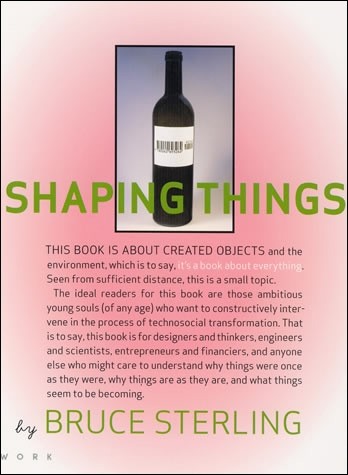Graham Harman: Guerrilla Metaphysics. Phenomenology and the Carpentry of Things (2005)
Filed under book | Tags: · metaphysics, perception, phenomenology, philosophy, things

Too unorthodox to be conservative, too systematic to be postmodern, Guerrilla Metaphysics is a unique attempt to describe the carpentry of things. At once systematic and offbeat, technical and poetic, it is a startling new vision of phenomenology’s motto: To the things themselves!
Instead of the occasional cause that makes God responsible for all events, Guerrilla Metaphysics seeks the vicarious cause that links human beings, tools, rivers, mountains, plastic, and clowns. Professor Harman argues for a radical shift in the phenomenological attitude to objects, and explains how phenomenology can be reunified with the physical world that it wanted to bracket from view.
In Part Two Harman takes a fresh approach to metaphor and comedy, showing how even physical causation has the structure of allure. In the final Part, he offers a new account of causation, which is shown to be not only vicarious but also asymmetrical and buffered.
Publisher Open Court, 2005
ISBN 0812694562, 9780812694567
Length 283 pages
Bruce Sterling: Shaping Things (2005)
Filed under book | Tags: · design, environment, gadgets, machine, things

“‘Shaping Things is about created objects and the environment, which is to say, it’s about everything,’ writes Bruce Sterling in this addition to the Mediawork Pamphlet series. He adds, ‘Seen from sufficient distance, this is a small topic.’
Sterling offers a history of shaped things. We have moved from an age of artifacts, made by hand, through complex machines, to the current era of ‘gizmos.’ New forms of design and manufacture are appearing that lack historical precedent, he writes; but the production methods, using archaic forms of energy and materials that are finite and toxic, are not sustainable. The future will see a new kind of object—we have the primitive forms of them now in our pockets and briefcases: user-alterable, baroquely multi-featured, and programmable—that will be sustainable, enhanceable, and uniquely identifiable. Sterling coins the term ‘spime’ for them, these future manufactured objects with informational support so extensive and rich that they are regarded as material instantiations of an immaterial system. Spimes are designed on screens, fabricated by digital means, and precisely tracked through space and time. They are made of substances that can be folded back into the production stream of future spimes, challenging all of us to become involved in their production. Spimes are coming, says Sterling. We will need these objects in order to live; we won’t be able to surrender their advantages without awful consequences.”
Designed by Lorraine Wild
Publisher MIT Press, 2005
Mediaworks Pamphlets series
ISBN 026219533X, 9780262195331
149 pages
PDF (updated on 2020-4-12)
Comment (0)Sherry Turkle: The Second Self: Computers and the Human Spirit, 20th ed. (1984/2005)
Filed under book | Tags: · artificial intelligence, computing, hacker culture, machine, media culture, psychology, software, things, video games

“In The Second Self, Sherry Turkle looks at the computer not as a “tool,” but as part of our social and psychological lives; she looks beyond how we use computer games and spreadsheets to explore how the computer affects our awareness of ourselves, of one another, and of our relationship with the world. “Technology,” she writes, “catalyzes changes not only in what we do but in how we think.” First published in 1984, The Second Self is still essential reading as a primer in the psychology of computation. This twentieth anniversary edition allows us to reconsider two decades of computer culture—to (re)experience what was and is most novel in our new media culture and to view our own contemporary relationship with technology with fresh eyes. Turkle frames this classic work with a new introduction, a new epilogue, and extensive notes added to the original text.
Turkle talks to children, college students, engineers, AI scientists, hackers, and personal computer owners—people confronting machines that seem to think and at the same time suggest a new way for us to think—about human thought, emotion, memory, and understanding. Her interviews reveal that we experience computers as being on the border between inanimate and animate, as both an extension of the self and part of the external world. Their special place betwixt and between traditional categories is part of what makes them compelling and evocative. (In the introduction to this edition, Turkle quotes a PDA user as saying, “When my Palm crashed, it was like a death. I thought I had lost my mind.”) Why we think of the workings of a machine in psychological terms—how this happens, and what it means for all of us—is the ever more timely subject of The Second Self.”
Keywords: personal computer, Speak and Spell, video games, hacker culture, artificial intelligence, Software Wars, Pac-Man, Marvin Minsky, Merlin, Seymour Papert, tic-tac-toe, Dungeons and Dragons, sprite, Tinkertoys, Sherry Turkle, Joseph Weizenbaum, home computer, computer program, pinball, Space Invaders
Publisher MIT Press, 2005
ISBN 0262701111, 9780262701112
372 pages
PDF (updated on 2014-9-15)
Comments (3)
